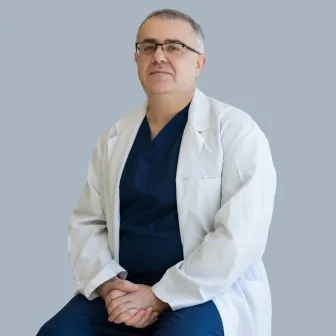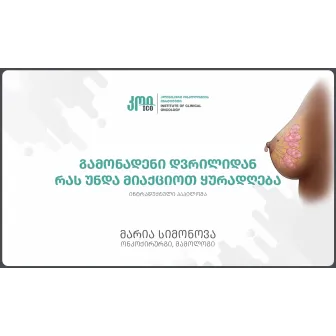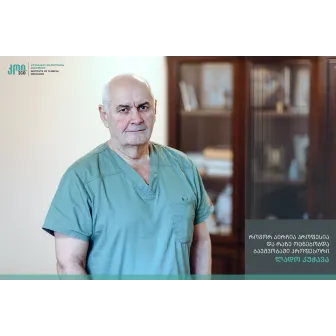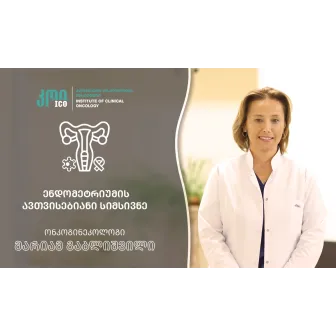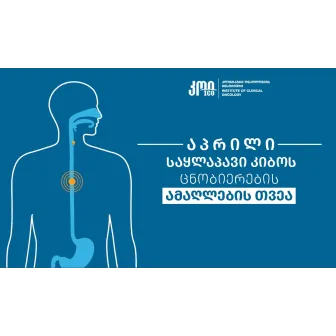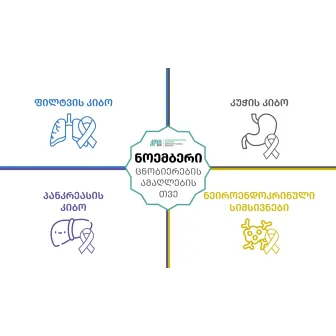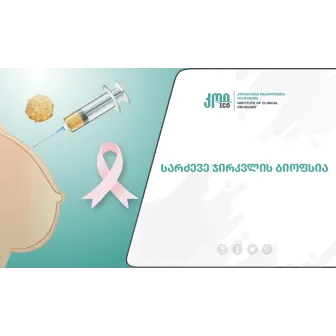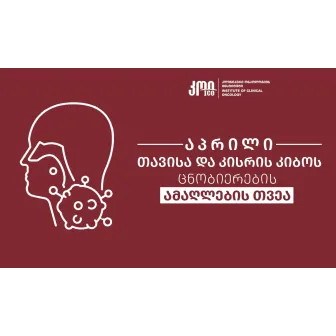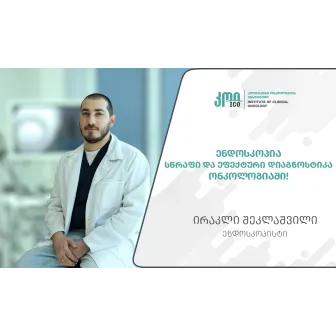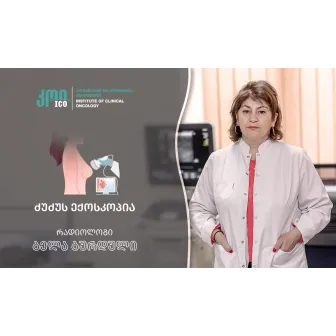Pancreatic cancer - clinical picture, diagnostics, and treatment methods - Giorgi Korakhashvili, a general surgeon at the Institute of Clinical Oncology, speaks about these topics.
The pancreas is a soft, glandular organ located behind the stomach. It participates in the digestion process and produces enzymes that break down proteins, fats, carbohydrates, and amino acids into simpler structures, so that the body can easily absorb them. A special mechanism protects the pancreas from the aggressive effect of its own enzymes. It also has the function of an endocrine gland; e.g., it produces important hormones such as insulin.
Pancreatic tumors and risk factors
Pancreatic tumors can be both benign and malignant.
Pancreatic tumors are divided into two groups:
1. Exocrine tumors (about 90%):
The most common is ductal adenocarcinoma, which develops from the cells of the pancreatic ducts.
2. Endocrine tumors (neuroendocrine):
Less aggressive, but sometimes hormonally active.
E.g., Insulinoma, glucagonoma, gastrinoma.
Several factors contribute to the development of malignant tumors:
· Chronic pancreatitis (inflammation of the pancreas);
· Tobacco consumption;
· Excessive alcohol consumption;
· Overweight and obesity
· Physical inactivity
· Weakened immune system;
· Inherited genetic, family factors.
Clinical Symptoms
Symptoms of pancreatic cancer often only occur in the late stages of the disease. Symptoms of pancreatic cancer mostly start unnoticed and depend on the size and location of the tumor (head, body, or tail of the pancreas). This is why diagnosis is often delayed.
A tumor in the head of the pancreas can obstruct the bile ducts, resulting in cholestatic jaundice. The symptoms of jaundice are often the first sign of diagnosis.
Key symptoms:
· Pain in the abdomen and back is the most common symptom. It localizes in the upper part and often radiates to the back.
· Jaundice of skin and visible mucous membrane (cholestatic jaundice). The tumor blocks the common bile duct, which causes:
o Jaundice of skin and eyes
o Dark urine
o Light color stool
o Skin itching
· Significant weight loss is a common symptom in malignant tumors.
· Causes: Decreased appetite, malabsorption, metabolic changes.
· Nausea and digestive problems
· New-onset diabetes mellitus, especially in elderly people. Sudden onset of diabetes or worsening of the condition can be the first signs indicating cancer.
General symptoms
Chronic fatigue and weakness
· Enzyme deficiency - A lack of digestive enzymes causes bloating, diarrhea, and fatty stools (steatorrhea)
· Thrombotic tendency - Thromboembolism is common in patients with pancreatic cancer.
· Depression or mood swings – sometimes are the early symptoms.
Diagnostics
Biochemical analyses:
· Bilirubin (direct and indirect): Elevated when bile ducts are blocked.
· Blood test (Clinical and biochemical)
· Alanine aminotransferase (ALT), aspartate aminotransferase (AST), ALP, GGT.
· CA 19-9 – Tumor marker
Instrumental diagnostics
Ultrasound examination
· It is non-specific, but useful in the initial stages.
· Helps to detect liver metastases or gallbladder and bile duct obstruction.
Computed tomography (CT)
· It is a basic diagnostic tool.
· Assesses tumor size, invasion, and the presence of metastases.
Magnetic resonance imaging (MRI) and MRCP
· Used to examine ducts and better visualize soft tissues.
· MRCP (MR cholangiopancreatography) – is especially useful for visualizing the bile and pancreatic ducts.
Endoscoping methods - ERCP (endscoping retrograde cholangiopancreatography):
· Allows for visualization of ducts and biopsy.
· It is possible to perform bile drainage.
EUS (Endoscopic ultrasound):
· Assesses pancreatic cancer with high accuracy
If needed, an ultrasound-guided biopsy can be directly performed (EUS-FNA).
Cytology and histology
Biopsy:
· Required to confirm the diagnosis.
· Provides information on a tumor type and differentiation.
Determination of the final stage (Staging)
Stanging depends on:
· A tumor size (T)
· Lymph node involvement (N)
· The presence of metastases (M)
The pancreas lies in the abdominal cavity in proximity to several major vessels, such as the aorta, inferior vena cava, and portal vein, which is why tumors often invade these structures. Therefore, accurately diagnosing and staging the disease is crucial to determining the right treatment tactics.
Treatment modalities:
Surgical treatment is an effective treatment for pancreatic cancer. However, surgery is only effective if a tumor has not spread and has no advanced metastases.
Choice of treatment depends on:
· Disease stage (TNM)
· Patient’s general health condition and concomitant disease
· The histological type of a tumor (exocrine or neuroendocrine)
· The presence of metastasis
Surgical treatment
(The only potentially curative method)
Possible only in the case of a resectable tumor
Main types of surgery:
- Whipple operation or pancreatoduodenectomy
· Used when the tumor is located in the head of the pancreas.
- Distal pancreatectomy
· In the case of a tumor located in the body or tail of the pancreas.
· Often used in combination with splenectomy (spleen removal).
- Total pancreatectomy
· Rarely used, when the entire pancreas needs to be removed.
Note: Neoadjuvant chemotherapy or chemoradiotherapy is often applied before surgery to shrink the tumor and increase the chance of resection.
Chemotherapy
Adjuvant chenotherapy (post-surgery).
Goal: Elimination of micrometastases and reduction of the risk of recurrence.
Neoadjuvant chemotherapy (before surgery).
· Used for marginally operable tumors.
Palliative chemotherapy (non-resectable or metastatic cancer).
· The prolongation of life and symptom control are the main goals.
Radiotherapy
· Can be used:
- Neoadjuvant - to prepare for surgery
- Adjuvant – post-surgery
- Palliative – pain relief or to stop bleeding.
Targeted therapy and Immunotherapy
Targeted therapy
· In selected patients, based on genetic testing.
Immunotherapy
· So far, it is less effective in pancreatic cancer, although studies are underway.
Palliative treatment in inoperable, metastatic cases.
· Goals:
o Symptom relief (pain, jaundice, digestive problems)
o Improvement of the quality of life
· Application:
o Bile duct stenting (biliary drainage)
o Pain management (opioids, nerve blockage)
o Enzyme replacement therapy
o Psychological support and hospice involvement as needed
Pancreatic cancer, one of the most aggressive tumors, has an extremely poor prognosis without early diagnosis and treatment. Regular preventive screenings, management of risk factors, and prompt response to symptoms are especially important. Combating pancreatic cancer requires a multidisciplinary approach, advanced diagnostic techniques, and the right treatment plan.
Prevention
Pancreatic cancer cannot be 100% prevented, but the risk can be significantly reduced through a healthy lifestyle and timely monitoring in high-risk patients.
- Views:1118





